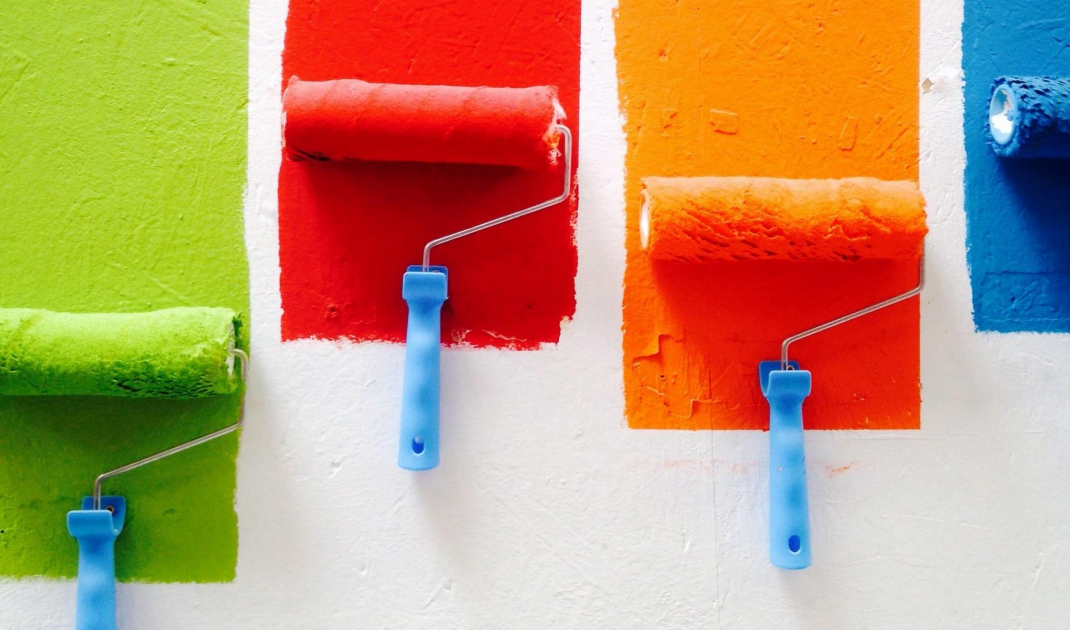The facade is the business card of the building! A facade treated with the right products is not only pleasing to the eye, but also protects the wall from temperature and weathering. Facades have to meet increasing demands, especially in urban areas with a high concentration of buildings. The choice of facade paint also has a major impact on the energy balance of the exterior coating - the right material helps to keep the thermal level of the building low and reduce operating costs.
The right facade paint
There are several ways to create a complete and beautiful image of a building. Among the most popular are facade panels, natural or artificial stone cladding and plaster. The latter method remains one of the best solutions over others due to its low price. Nevertheless, bare plaster is not very aesthetically pleasing, so it is easier and cheaper to give it a bright and striking appearance by painting. To do this, we need to choose the right facade paint.
How to choose the right facade paint
© Umanoide
Acrylic paints
Due to their popularity and lowest price, they are considered basic. They are usually the first-choice paints and are swapped for others when required. They form a flexible coating, are rainwater resistant and are available in a variety of colors, including intense colors. They have medium resistance to dirt, but can be easily washed, such as with a pressure washer. Washing hard-to-reach, high sections of walls is not easy, so in areas with high air pollution, it is better to choose a different paint. Acrylic paints are prone to algae growth, forming a characteristic green residue. This is especially true in permanently shaded areas, such as where the house is surrounded by trees. However, additives such as Teflon can significantly reduce this phenomenon. However, the paint will not have full resistance like silicate products, for example.
The biggest limitation of acrylic products, both paints and plasters, is their relatively low vapor permeability, or high diffusion resistance. As a result, they are not suitable for insulating with mineral wool (which is very easily vapor-permeable). However, they can be applied over old acrylic plasters.
Silicate paints
Also called silicates, they are more expensive than acrylics and available in fewer colors. On the other hand, they are resistant to contaminants, especially algae growth (they handle them best of all paints on the market). They form a strongly alkaline base (pH 11-12). In forest terrain it will be a good choice. It has good vapor permeability, but less resistance to water - after heavy rain, wet spots may appear on the facade. Fortunately, they dry very easily. When painting with silicate paint, you should pay special attention to the prevailing weather conditions - for the first few days it is poorly resistant to rain, strong sunlight and wind. This type of paint also has disadvantages - one of them is that it can not be applied over acrylic and silicone plaster.
When applying such paint, it is necessary to have appropriate clothing - goggles and protection for the hands, since this type of paint contains corrosive substances.
Silicone paints
They are relatively expensive, but are characterized by exceptional resistance to water and dirt. They are hydrophobic, so instead of flowing streaks on the facade, we can see water droplets during rain. Rain in a certain way can clean their surface of dirt. However, it should be noted that such self-cleaning is usually very uneven, especially with low buildings. Water resistance is accompanied by good vapor permeability, so this paint can be applied over any type of insulation and plaster. It can even be said that they are universal. They are distinguished by significant durability, adhesion to the substrate, resistance to UV radiation and temperature fluctuations. On the other hand, they are less resistant to scrubbing than, for example, acrylic paints.
It is also worth mentioning that paints containing a mixture of resins, such as silicone-silicate, among others, perform very well. Thanks to the combination of substances, their characteristics are very similar, and their price is slightly lower.























